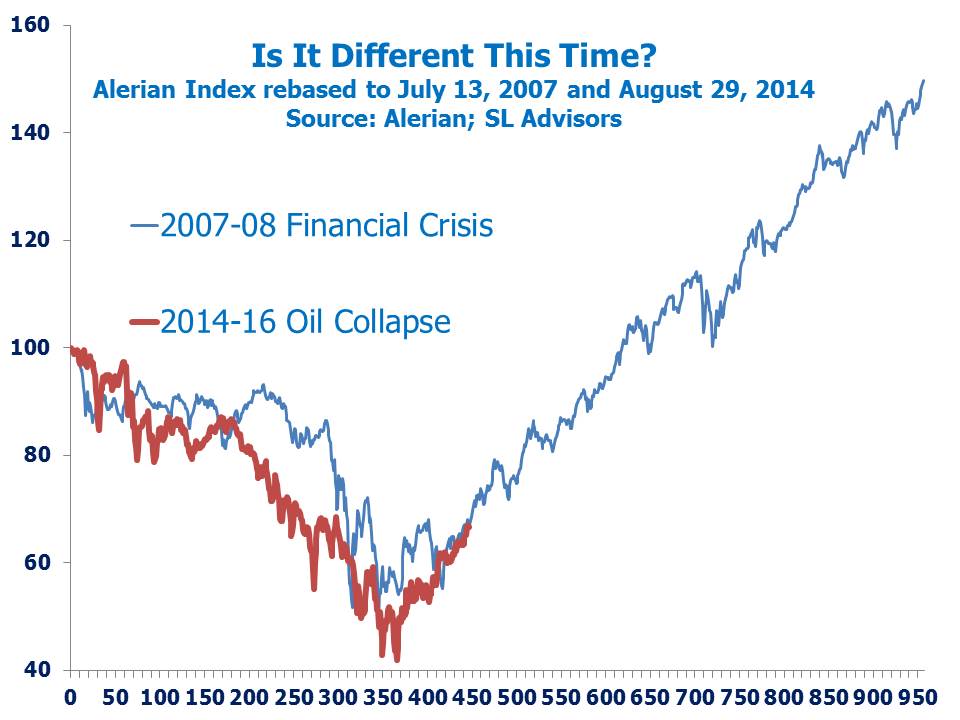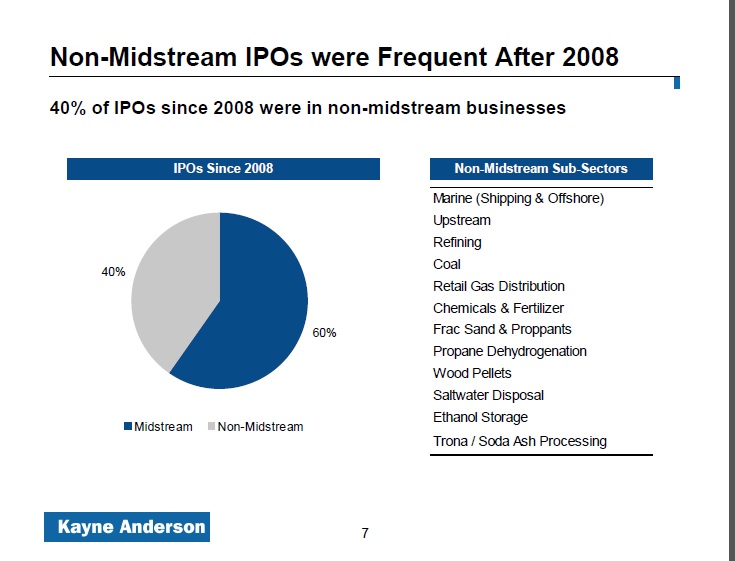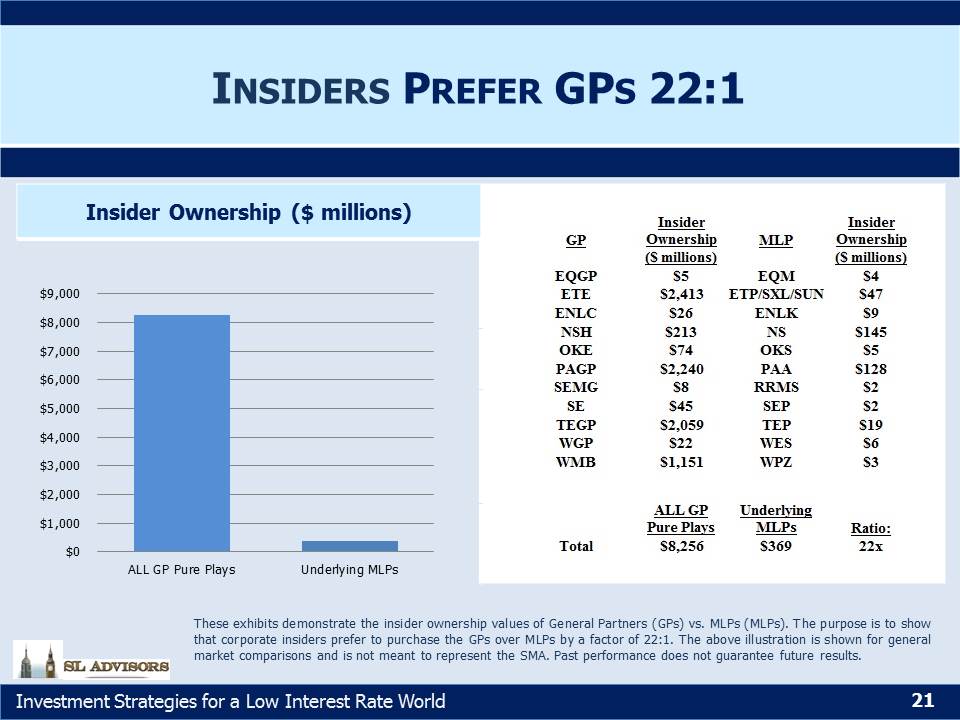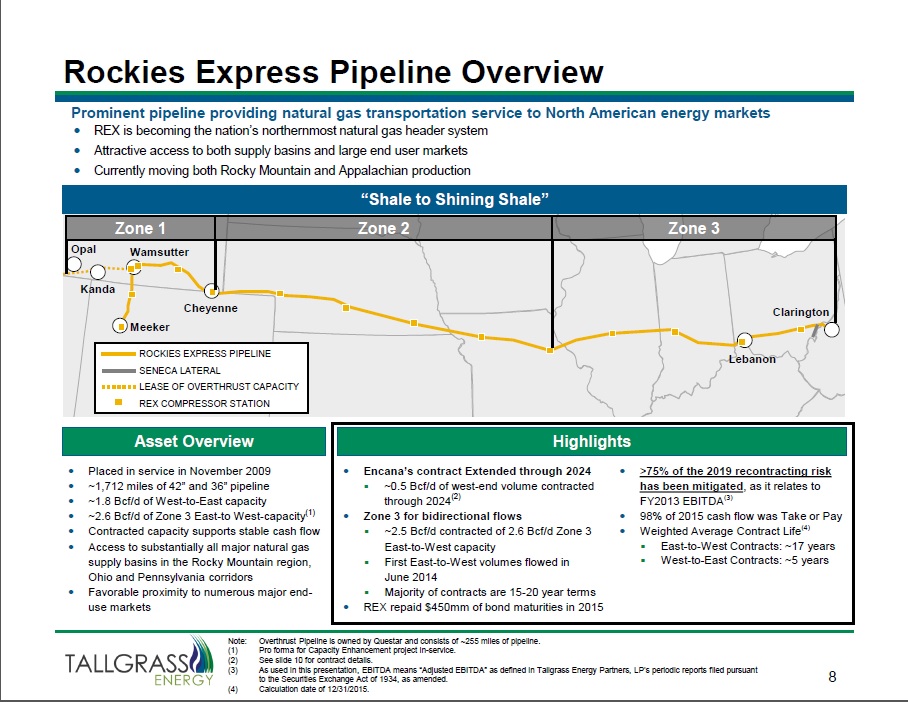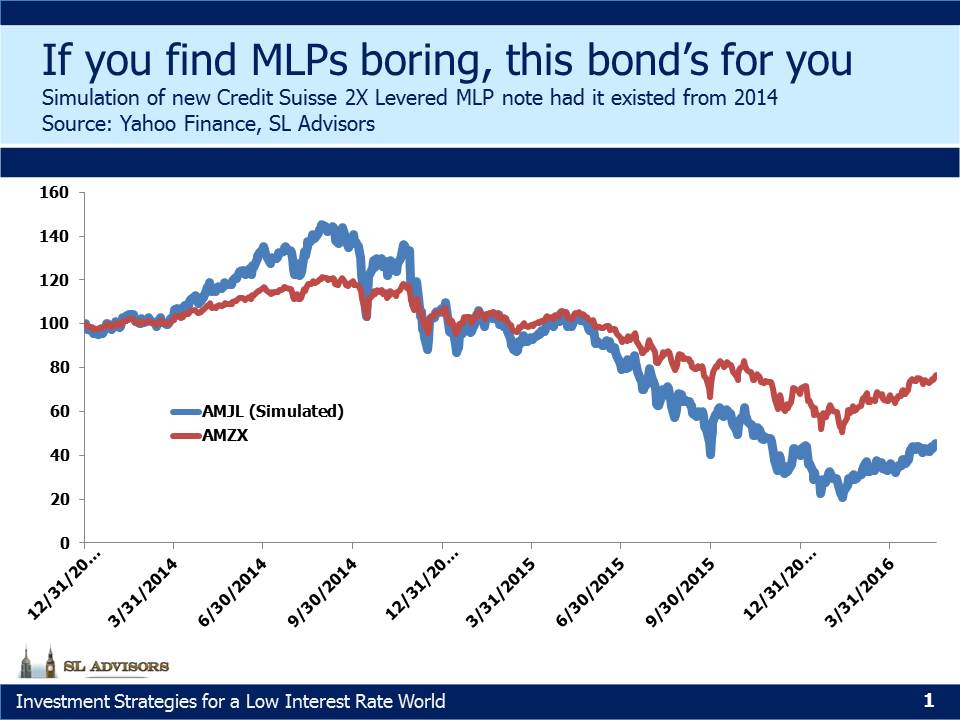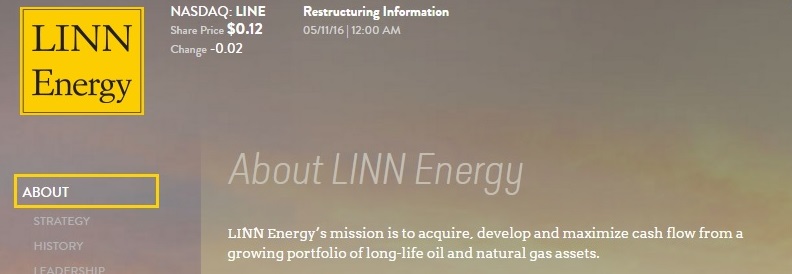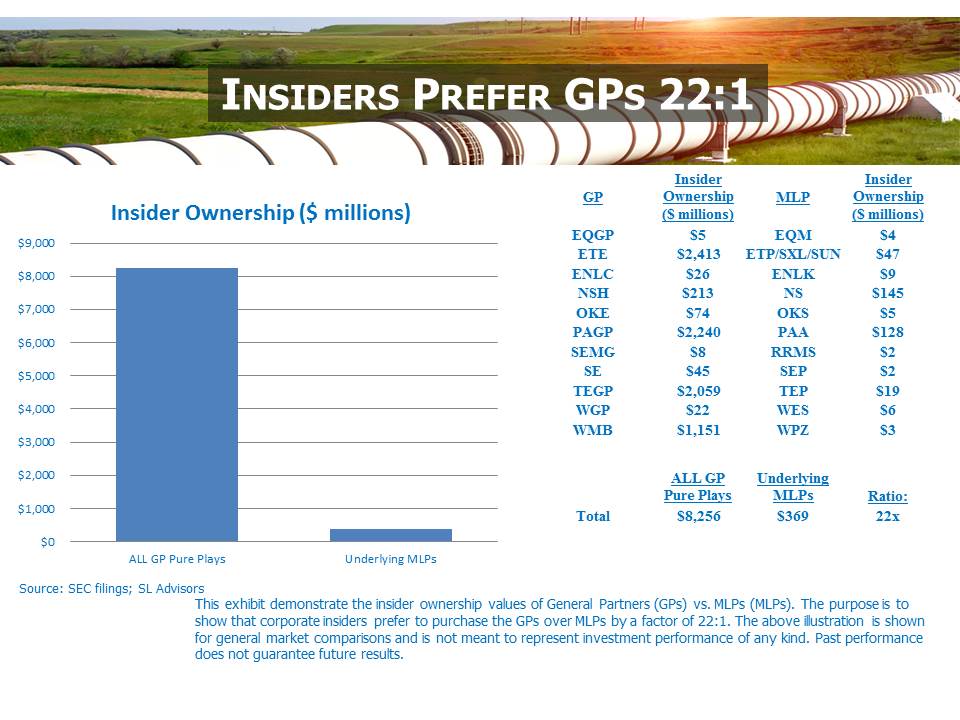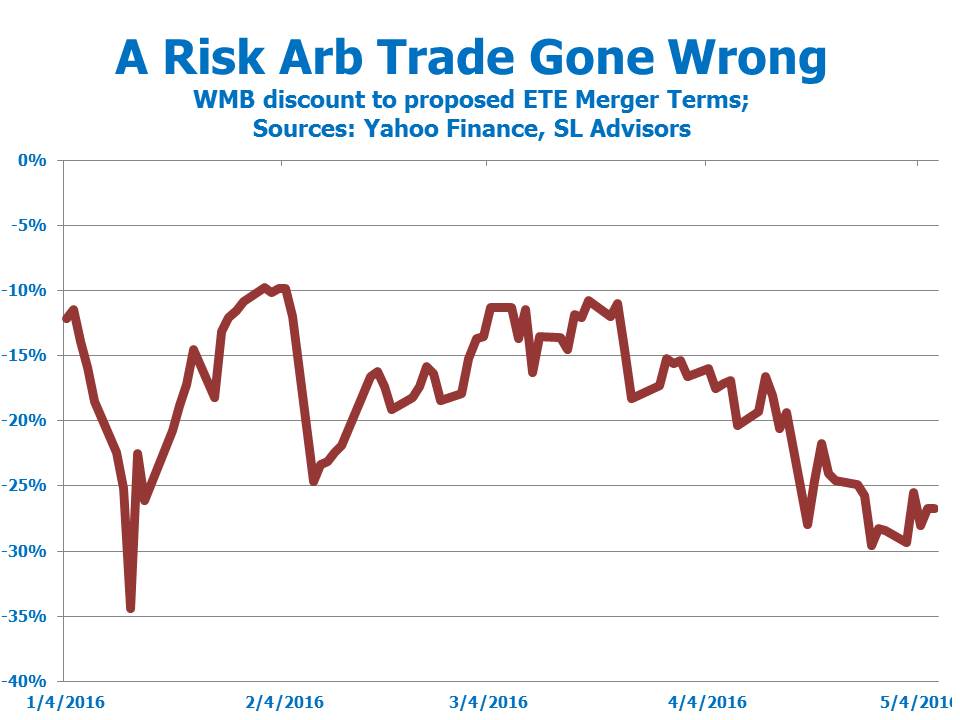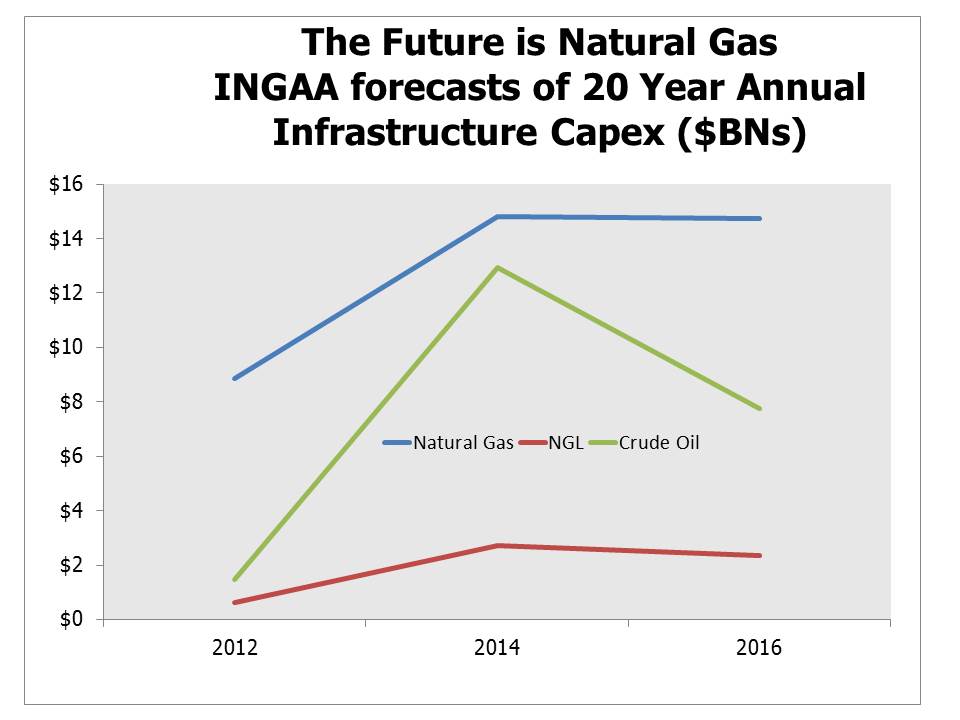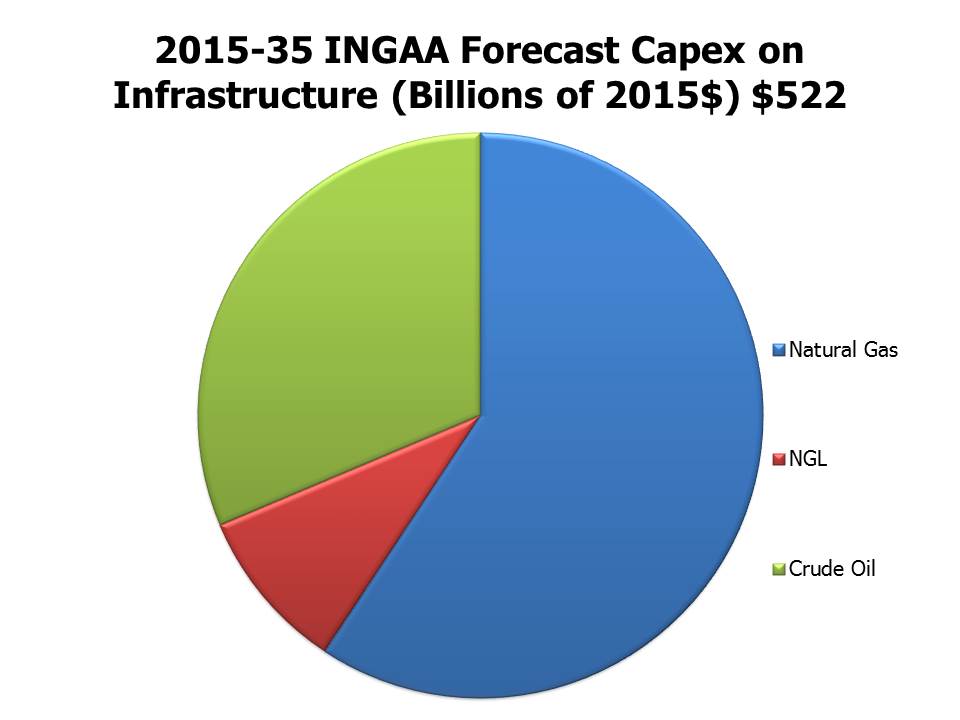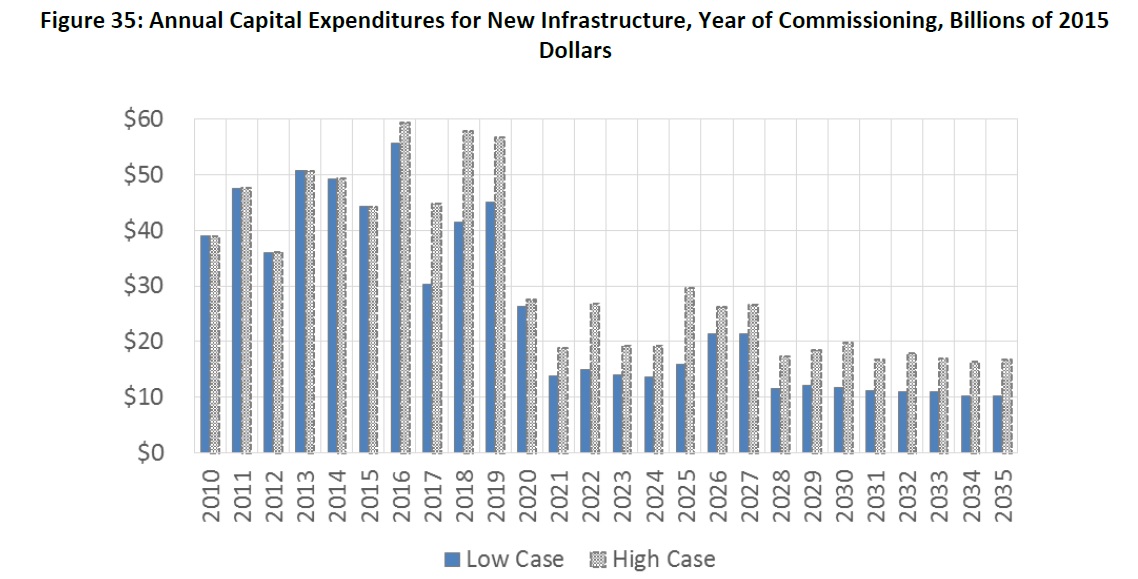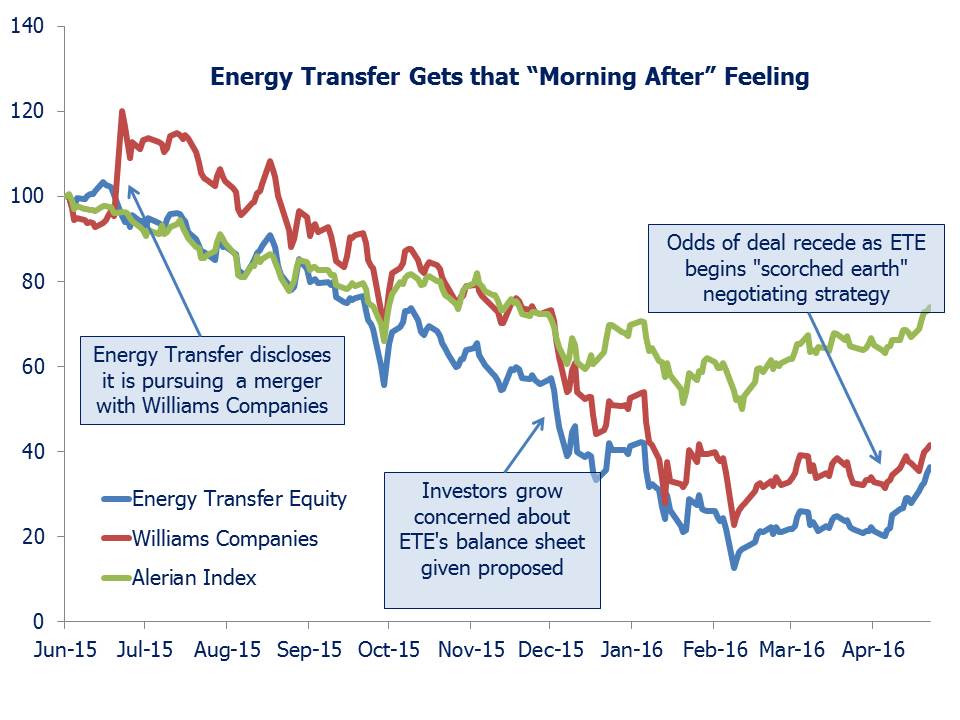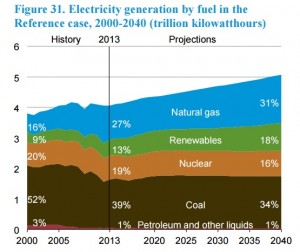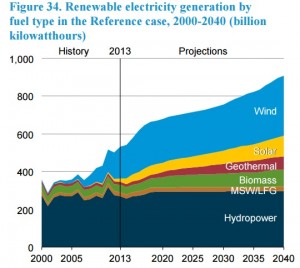The Energy Transfer-Williams deal has been a rich source of material for this blog, as well as an important driver of MLP performance. Energy Transfer Equity (ETE) was creative in its pursuit of Williams Companies (WMB); as buyer’s remorse quickly set in they were equally creative in pulling all the levers at their disposal to force a renegotiation. As part of this effort to alter the terms of the deal, ETE has taken some steps that transfer wealth directly to ETE CEO Kelcy Warren and other insiders, at the expense of the rest of the ETE unitholders. Whether this was done to drag WMB back to the negotiating table will be clear if the steps are undone once the transaction is deemed to not close, or renegotiated. In other words, ETE management has engaged in blatant preferential self-dealing; we’re watching to see how it plays out. The SEC filing describing the offending security is here.
The original merger agreement consisted of WMB shareholders receiving 1.5274 shares of Energy Transfer Corp (ETC) per WMB share and $8.10 in cash. ETC shares were designed to be worth the same as ETE units, and were created so that WMB investors wouldn’t have to deal with the K-1s issued by ETE. On September 28, 2015 ETE valued the transaction at $43.50 per WMB share, based on where ETE had been trading just prior to the announcement.
The $8.10 per share in cash promised added up to $6.08BN, and ETE’s intention to finance this with debt steadily weighed on the stock price. As ETE fell, the value of the deal to WMB fell, and ETE management quickly concluded that they needed to renegotiate the terms. Whatever overtures were made in this regard evidently did not draw the desired response, so ETE dropped the gloves.
Suppose for a moment you committed to reinvest a portion of your future dividends back into the company you run; this show of confidence would be welcomed, and reinvested dividends typically buy shares at the current price when the dividends are received. The Duncan family has done this with Enterprise Products Partners (EPD), of which they own 34%. Or, suppose you felt your company’s stock was ludicrously cheap and worth buying; you’d get as many shares at today’s price as you were willing to pay for, today. NuStar’s chairman Bill Greehey continuously does so on the open market with MLP NuStar Energy LP (NS) and its General Partner NuStar GP Holdings (NSH).
It seems pretty simple: if you pay today you get today’s price, and if you pay in the future you get the future price. But on March 8, Kelcy Warren and a few insiders created for themselves a special security that allows them to be both senior in the capital structure to the common unitholders and to buy units of ETE in the future but at a price that’s roughly half of where it trades today.
To show how riskless this transaction is for them, the $6.56 price of ETE at which they can buy priced ETE at a yield of 17.37% (based on its 4Q15 $0.285 quarterly distribution). This is where ETE was trading in early March. Clearly, the market held serious doubts as to whether the distribution was secure. The convertible units ETE has issued require ETE insiders representing 31.5% of the company to invest future distributions in excess of $0.11 per share back into newly issued ETE units. There’s a wonderful circularity to this – if the 17.37% yield on ETE from March turns out to be prescient and future distributions to common unitholders are eliminated, the insiders don’t have to stump up cash to buy the extra ETE units. But if the 17.37% yield turns out to be a grossly pessimistic forecast, and distributions continue to be paid, the insiders will get to use the distributions paid to buy units at a price whose existence the subsequent payment of distributions has rendered ludicrously low.
Put another way, ETE has raised capital at the exorbitant rate of 17.37%, although that capital will only be available to them if they’re able to continue paying distributions, which would suggest they didn’t need it in the first place. If they are unable to keep paying, the capital won’t be there.
It’s a form of heads I win, tails you lose. Most investors in a stock that had lost 90% of its value (as was the case with ETE at that stage) would jump at such an opportunity.
But it gets better. The insiders who own this convertible security now have seniority, in that the $0.11 per unit “Preferred Distribution Amount” is paid to them “prior to any distribution on the Partnership’s common units”. So the new security is really a Convertible Preferred, not simply a Convertible which is what they’ve called it in the SEC filing. Kelcy and his friends have moved themselves up in the capital structure.
There’s even more though. The insiders get to invest their future distributions back into ETE at the knock-down price of $6.56, but even if those distributions are not paid they still get the additional units of ETE. The irony is that ETE only sunk to such a low price because of management’s poorly conceived merger proposal. They screwed up so badly they felt entitled to grant themselves additional units at the bargain basement price their actions had caused. To show just how scandalous this new security is, ETE could eliminate their distribution and yet Kelcy and his friends would still receive their $0.11 per unit Preferred Return in cash AND be entitled to 79 million new ETE units without having to pay for them. At today’s price this represents a transfer of wealth from the non-insiders to Kelcy and friends of over $1.3BN.
This opportunity was only offered to certain accredited investors. Kelcy Warren owns approximately 18% of the partnership. The recipients of this gift from the rest of ETE are essentially the senior management, notably Kelcy himself but also including John McReynolds (President of ETE’s General Partner), Matthew Ramsey (President of Energy Transfer Partners), Marshall McCrea III (Group Chief Operating Officer) and Ray Davis (retired, co-founder). It’d be interesting to hear any of these gentlemen justify their participation, and to reconcile it with their fiduciary obligation to other ETE unitholders.
You’d think this kind of egregious self-dealing would be illegal. ETE claims that they wanted to offer this opportunity to all the ETE unitholders but because of the merger agreement with WMB they were required to obtain WMB’s approval. Under the deal, each WMB share is worth 1.5274 shares of ETC (in effect, ETE), but because the convertible issue took place before closing the deal it had the effect of reducing ETE’s purchase price for WMB. The converts will increase the number of ETE units outstanding, thus diluting their value. It alters the terms of the transaction. WMB couldn’t possibly agree to this, and so they naturally withheld their approval. ETE went ahead with it anyway, claiming that WMB’s failure to approve the converts limited the offering to the select group of insiders noted above. But since WMB couldn’t reasonably be expected to approve what was in effect an 11% dilution in the value of the equity portion of the deal, their response wasn’t surprising.
We originally thought the converts were issued as part of an aggressive negotiation strategy intended to persuade WMB shareholders to vote against the deal or get WMB’s board to agree to altered deal terms. The $6BN cash payment has hung over both stock prices for months. And the SEC filing noted that the proceeds from the foregone distribution payments would be used to pay down debt incurred in conjunction with the WMB transaction. So you might reasonably assume that if the transaction fails to close, the converts won’t be needed and Kelcy Warren will remember his fiduciary obligation. He can cancel the issue.
However, ETE’s most recent earnings call made clear that these convertible units would remain regardless of the merger closing. The sell-side analysts as usual avoided any tough questions. But the biggest question, which wasn’t asked, was how Kelcy could justify such abuse of his fellow public ETE unitholders.
Equity investors in ETE are referred to as Limited Partners. But following the issuance of this new security they are no longer partners at all, but rather victims of self-dealing by management, owners of an inferior class of securities created by the insiders moving themselves up to a superior position with superior economics for no consideration.
It’s not too late for Kelcy to clarify this issue. On the list of CEOs who have performed as honorable stewards of investor capital, you will not find Kelcy Warren. He may be a billionaire, but he is no Warren Buffett. We hope ETE will revisit this abuse of their unitholders and restore their reputation for honest dealing by canceling the issue. Otherwise, why would anybody ever do business with them again?
We are invested in ETE, EPD, NSH and WMB
